Anxiety in Children & Adolescents
![]()
What is Anxiety?
![]()
Anxiety is a feeling of worry, nervousness, or fear that everyone experiences sometimes. It is a normal reaction to stressful situations like taking a test, speaking in front of the class, or starting a new school. However, when these feelings happen too often or are too strong, they can interfere with a child's daily life. This is when it might be an anxiety disorder, which needs attention and care.
Famous People Who Have Anxiety

Ariana Grande

Kendall Jenner

Ryan Reynolds

Johnny Depp
![]()
Understanding the Diagnosis
How common are anxiety disorders in children & Adolescents?
Anxiety disorders are more common than you might think! About 1 in 8 children are diagnosed with an anxiety disorder, and this number goes up to 1 in 4 for teenagers. That means in a class of 20 students, at least 2 or 3 might have an anxiety disorder. Both boys and girls can have anxiety disorders, but girls might be more likely to be diagnosed.
What is the difference between “normal” anxiety and an anxiety disorder?
Everyone feels anxious sometimes, but there's a difference between "normal" anxiety and an anxiety disorder. Normal anxiety is when a child feels worried about something specific, like a test or a new activity. These feelings go away once the situation is over and don't stop the child from doing everyday things.
An anxiety disorder is different. It happens when anxiety is so strong and constant that it affects daily life, causing trouble at school, with friends, or at home. The child might avoid things they used to do or have meltdowns.
At MindWeal, our providers can tell the difference between normal anxiety and an anxiety disorder. They look at how often the anxiety happens and how much it affects the child's life. If anxiety causes distress and stops the child from doing things they should be able to do, it might be an anxiety disorder.
What are the Symptoms of Anxiety in Children & Adolescents?
- Worrying: Kids with anxiety often have repetitive, uncontrollable thoughts about "what if" scenarios that may never happen. Avoidance: They might avoid situations that cause anxiety, steering clear of new or challenging activities.
- Behavioral Problems: If they can't avoid an anxiety-triggering situation, they might have meltdowns, refuse to participate, or have temper tantrums.
- Extreme Reactions and Hypervigilance: These children often display hypervigilance, constantly scanning their environment for anything new or different. They react to new or changing events with fear rather than curiosity, causing significant distress.
- Physical Symptoms: They often have physical symptoms like stomachaches, headaches, shortness of breath, nausea, or vomiting, and might worry excessively about their health.
What are the different forms of anxiety disorder?
Anxiety disorders can affect children and adolescents in various ways. Here are some of the most common types:
- Generalized Anxiety Disorder (GAD): Child worries about multiple areas like health, school, family, future events, and personal safety. These worries are persistent and not limited to one specific concern.
- Social Anxiety Disorder (SAD): Child has an intense fear of social situations, particularly of being judged or embarrassed in front of others. This fear can be related to performing in public or interacting with peers and adults.
- Separation Anxiety Disorder: Child has a fear of being separated from caregivers or loved ones. This includes worry about something bad happening to themselves or their caregivers when apart.
- Panic Disorder: Sudden and unexpected episodes of anxiety characterized by intense fear and physical symptoms like chest pain, shortness of breath, and dizziness. There is also a strong fear of having future attacks.
- Specific Phobia: Child has an intense, irrational fear of specific objects or situations, such as animals, heights, or certain activities. The fear is out of proportion to the actual danger posed by the object or situation.
How Do the Symptoms of Anxiety in Children & Adolescents Differ from Anxiety in Adults?
Anxiety looks different in kids and teens compared to adults. Children with anxiety often can't say what they're worried about. Instead, they might have physical symptoms like stomach aches, headaches, and trouble sleeping. They might avoid things that make them anxious, leading to tantrums or meltdowns, especially when facing fears like going to school. Adults, on the other hand, are more likely to recognize and talk about their anxiety and can explain what they're worried about.
|
|
Treating Anxiety in Children & Adolescents
Will my child’s anxiety pass without treatment?
Sometimes, anxiety can improve on its own, especially if it’s caused by a specific situation. But if it happens too often, is too strong, or interferes with a child's daily life, it’s important to get help. Without treatment, anxiety can stick around or even get worse. Seeking support can make a big difference in helping your child manage their anxiety and thrive.
How is anxiety treated in Children & Adolescents?
Anxiety in children and teens can be treated with therapy, medication, or both. After a careful evaluation, the MindWeal provider will recommend a treatment plan based on several factors: the type and severity of the symptoms, the child's treatment history, the urgency of the treatment, and how the child and family feel about therapy and medication. The goal is to find the best way to support the child's mental health and help them feel better.
Which psychotherapies are effective in the treatment of anxiety?
Psychotherapy is often the first choice for treating anxiety disorders. At MindWeal, we recommend Cognitive Behavioral Therapy (CBT), a proven therapy for treating anxiety in children and teens. CBT helps kids recognize negative or unhelpful thoughts, feelings, and actions and replace them with positive, realistic ones. It also includes exposure therapy, which involves gradually facing the things that make them anxious until they become less scary. By learning these skills, children can better manage their anxiety and respond to challenging situations in healthier ways. Therapy can be used alone or with medication, depending on what’s best for your child.
How effective is Psychotherapy in the treatment of Anxiety symptoms?
Therapy can greatly help with anxiety, especially when the therapist is experienced and the individual attends regularly. However, it can be challenging. It requires regular sessions and a skilled therapist. Facing fears can be tough, and therapy might be less effective if anxiety symptoms are very severe or if there are additional mental health issues. In such cases, combining therapy with medication might be best.
|
|
Taking Medications for Anxiety
Are medications effective for anxiety in children & adolescents?
Yes, medications can be very effective for treating anxiety in children and adolescents. Studies have found that kids who took medication for anxiety did better than those who took a placebo (a sugar pill). Research also shows that kids who take medication often see their anxiety improve faster than those who only go to therapy or do nothing. The best results usually come from combining medication with therapy.
What types of medications are available to treat my child’s anxiety?
The medications effective for treating Anxiety in kids and teens are:
- Selective Serotonin Reuptake Inhibitors (SSRIs): These are usually the first choice.These include Sertraline (Zoloft), Fluoxetine (Prozac), and Escitalopram (Lexapro).
- Selective Norepinephrine Reuptake Inhibitors (SNRIs): These are recommended if SSRIs were not helpful. Venlafaxine ER (Effexor XR) and Duloxetine (Cymbalta) are also effective for treating anxiety.
- Atypical Anxiolytic: Buspar can be added to SSRIs & SNRIs boost their effectiveness.
- Antihistamines: Hydroxyzine and Diphenhydramine (Benadryl) may be used for physical symptoms of anxiety and sleep problems related to anxiety.
These medications have been shown to help manage anxiety symptoms. Your child’s healthcare provider can help decide which medication is best suited for your child.
How are medications chosen?
Choosing the right medication for your child's anxiety is a careful process. We only recommend medications that have been shown to work in research studies. Our choices are guided by practice guidelines from national organizations like the American Academy of Child & Adolescent Psychiatrists and the American Academy of Pediatrics.
The treatment guidelines tell us an SSRI should be chosen as the first-line medication for treatment. If it doesn’t work, we try another SSRI. After two unsuccessful attempts, we may switch to an SNRI (Selective Norepinephrine Reuptake Inhibitor). If these are partially effective, we might add Buspar to help.
Our providers look at your child's age, past medications and their effects, family history of medication responses, and the preferred form of medication (capsule, tablet, or liquid). By following these steps, we ensure your child gets the best possible care tailored to their needs.
How is the medication dose selected and changed?
To find the right dose for your child’s medication, we start with a low dose and gradually increase it. We continue this until we find the dose that effectively reduces symptoms without causing side effects. During treatment, you and your child will have regular check-ins with the clinician. These meetings allow us to see how well the medication is working and if there are any side effects. During these visits, the clinician will adjust the dose as needed to ensure your child gets the best results.
How long does medication take to work?
When your child starts taking medication for anxiety, you might see some improvement in 2 to 4 weeks, with more progress over 8 to 12 weeks. Some children feel better quickly with a low dose, while others might need a higher dose. We start with the lowest dose to help children get used to the medication and reduce side effects. Each dose is given about a month to work. If it doesn’t help, we increase the dose. Finding the best dose can take 8 to 12 weeks. Full benefits are usually seen after 6 to 9 months of treatment. It's important to be patient and trust the process. With time and the right support, your child can start to feel better.
Can the medications cause side effects and how are they managed?
Yes, your child may experience some side effects from the medication at first. Common side effects from SSRIs include headaches, trouble sleeping, changes in appetite, stomach pain, and diarrhea. Most of these side effects are mild and get better over time. We start medications at a low dose to help minimize these side effects. It's normal to worry about side effects, especially for children with anxiety disorders who might worry more than others. Side effects are important to consider when deciding if a dose needs to be adjusted. Sometimes, it can be hard to tell if a symptom is a side effect of the medication or anxiety about taking the medication, like a stomachache
On the day your child’s medication is prescribed, you will receive a separate email with a link to detailed information about the medication. This email will explain the medication's benefits and possible side effects, provide tips on how to manage them, and advise when to contact your provider.
What is the FDA warning of Risk of Increased Suicidal Thoughts with Antidepressants?
The FDA has added a "boxed warning" to all antidepressant medications to alert doctors and patients about the need for special care when these medications are used in children, adolescents, and young adults. This warning states that antidepressants are linked to an increased risk of suicidal thoughts and behavior in a small number of children and teens, especially at the beginning of treatment.
Research shows a slight but notable increase in the risk of suicidal thoughts and behaviors among children and teens taking SSRIs. However, in research studies, this did not lead to actual suicide deaths. Studies also show that kids who are in therapy do not have this increased risk. While the current evidence does not definitively prove a clear link between antidepressants and these increased risks, the benefits of treating anxiety generally outweigh the potential risks.
It is crucial to monitor your child closely if they are on an antidepressant. Pay careful attention to any changes in mood, behavior, thoughts, or feelings, especially when starting a new medication or adjusting the dose. Watch for any sudden changes, as these can indicate increased risks and may need immediate action. By closely observing and reporting these changes, you can help ensure your child's treatment is safe and effective.
Are anxiety medications habit-forming?
No, the medications prescribed by our providers are not habit-forming. Your child will not become physically or emotionally dependent on them. These medications help reduce anxiety symptoms, but they are just one part of the treatment. When medication, therapy, and positive thinking strategies are used together, they offer the maximum benefit
Will these medications change my child’s personality in an unwanted way?
Medications can help shape your child's personality over time in a positive way. They reduce anxiety symptoms, which can lead to more positive feelings, thoughts, and behaviors. When your child feels less anxious, they can think more positively and start engaging in activities they might have previously avoided. Participating in positive activities helps boost their self-confidence, which in turn promotes even more positive behavior. This creates an upward cycle of improvement. These positive changes show that the medication helps your child feel and function better without changing who they are.
How do I know that the medication is working?
You will know that the medication is working if you notice these improvements in your child:
- Reduced Worrying: Your child isn't talking about or showing signs of worry as much.
- Increased Comfort and Relaxation: Your child feels more comfortable and relaxed in different situations.
- Improved Abilities: Your child can do things they couldn't do before, like going to school or public places.
- Decreased Physical Symptoms: Physical symptoms like headaches, stomachaches, and trouble swallowing due to anxiety are reducing or stopping.
- Overall Well-being: Your child's overall happiness and sense of self are better.
To make sure the treatment is working, we use a wellness score. This score combines what the provider sees in your child's symptoms, what you notice about their overall wellness, and how your child feels about themselves. Be sure to complete the wellness questionnaire before each visit so we can track your child's progress and make any needed changes to their treatment pl
How long should medication be continued?
Once your child's anxiety symptoms have been gone for 12 months, the medication can be slowly reduced and eventually stopped. This process usually takes 3 to 6 months, depending on the dose. Higher doses might take longer to taper off. Any tapering and stopping should be done under the supervision of a licensed specialist to ensure safety and effectiveness.
Here are a few things to remember:
- Long-term use of these medications is safe if the medication is well-tolerated.
- There's a risk that anxiety symptoms could return even after your child has recovered if medications are discontinued.
- Children who have learned how to manage their anxiety in therapy are less likely to have symptoms come back once the medication is stopped.
- If anxiety symptoms return after stopping the medication, it may be necessary to continue the medication indefinitely.
Are there any medications that can be used on a needed basis for intense episodes of anxiety?
Even with effective treatment using medication and counseling, children might still have intense anxiety in certain situations, like flying or visiting the dentist. For these rare, stressful moments, "as-needed" medications can help. These medications work quickly and don't last long. Common options are antihistamines like Hydroxyzine (Atarax or Vistaril) and Diphenhydramine (Benadryl). They can help manage anxiety during these times.
Are there medications that can help with sleep problems that might be due to anxiety?
Children with anxiety often have trouble sleeping. They might worry about school, be scared to sleep alone, or fear the dark. Good sleep habits, known as sleep hygiene, can help all children with sleep issues. If these habits don't help, your provider may prescribe medications to help your child fall asleep and stay asleep.
Melatonin is often the first treatment used. Hydroxyzine (Atarax or Vistaril) and Benadryl can also be helpful. Clonidine can be effective, especially if your child also has ADHD. Some antidepressant medications like Trazodone and Mirtazapine can also help with sleep problems related to anxiety.
These medications should only be taken as prescribed by your provider to ensure they are safe and effective for your child.
|
|

Parent Guide: Supporting Your Child with
Anxiety
Parenting an anxious child can be challenging, but with the right strategies and support, you can help your child manage their anxiety effectively. Here are some practical tips to support your child in overcoming their fears and building resilience. Remember, small steps lead to big changes, and your support makes all the difference.
Creating a Supportive & Nurturing Environment
-
- Maintain Open Communication with Your Child: It’s essential to create a safe space where your children feel comfortable sharing their thoughts and feelings without fear of judgment. Encourage them to express their emotions, helping them understand that talking about feelings is a normal and healthy part of life. By actively listening and validating their emotions, you build a stronger bond with your children, enhancing their overall mental and emotional wellbeing.
- Show Empathy and Understanding: Comforting a child who is upset or stressed involves acknowledging their emotions and showing compassion. Even if you don’t agree with their perspective, validating their feelings reassures them that it’s okay to experience a range of emotions. This approach builds trust, strengthens your relationship, and creates a safe space for them to express themselves.
- Establish Structure & Routines: Predictable routines are crucial for children’s development. Consistent daily activities like meals, homework, and bedtime provide a sense of security and stability, promoting their emotional wellbeing. Regular routines make it easier for children to adapt to changes and transitions.
- Structured Homework Time: Set a specific time each day for homework or studying. Consistent study times help establish good habits and reduce procrastination.
- Offer Praise & Rewards: Celebrate your child's successes. Focus on praising the effort, not just the outcome. Review our guide “Using Praise: A Positive Parenting Skill” to learn how to use praise effectively to encourage positive behavior in children. Reward your child's efforts to face anxiety-producing situations. Focus on rewarding the effort, not the outcome.
- Maintain Open Communication with Your Child: It’s essential to create a safe space where your children feel comfortable sharing their thoughts and feelings without fear of judgment. Encourage them to express their emotions, helping them understand that talking about feelings is a normal and healthy part of life. By actively listening and validating their emotions, you build a stronger bond with your children, enhancing their overall mental and emotional wellbeing.
Encourage Healthy Habits
-
- Promote Physical Activity: Physical activity is essential for maintaining good mental health, improving cognitive function, and enhancing sleep quality. Incorporate physical activity into their daily routines to boost their overall quality of life.
-
- Ensure Balanced Nutrition: A balanced diet is vital for your child’s physical and emotional health. Ensure they consume a variety of foods from all food groups to avoid mood, sleep, and behavioral disturbances.
- Prioritize Good Sleep: Adequate sleep is crucial for emotional wellbeing. Children under 12 need 10-13 hours of sleep, while teenagers need 8-10 hours. Teach your child to prioritize good sleep habits for overall health and wellness.
- Ensure Balanced Nutrition: A balanced diet is vital for your child’s physical and emotional health. Ensure they consume a variety of foods from all food groups to avoid mood, sleep, and behavioral disturbances.
 Nourishing Social-Emotional Development
Nourishing Social-Emotional Development
-
- Teach Emotional Awareness: Help your child recognize and talk about their emotions. Activities like reading books on emotions or using picture cards with different facial expressions can be effective. Discussing scenarios and asking how they would feel in various situations can develop their emotional intelligence.
- Develop Social Skills: Model positive social interactions to teach your child skills like listening, sharing, and cooperating. Encourage participation in community activities like team sports or volunteer work to practice these skills and learn effective communication.
- Teach Emotional Awareness: Help your child recognize and talk about their emotions. Activities like reading books on emotions or using picture cards with different facial expressions can be effective. Discussing scenarios and asking how they would feel in various situations can develop their emotional intelligence.
Teaching Coping Strategies
-
- Use and Create New Coping Skills: Teach your child to recognize and change negative thoughts with our “DIY Guide for Kids: How to Learn and Practice CBT Skills for Treatment of Anxiety.” Help them manage emotions, develop healthy coping strategies, and build better relationships by referring to our “DIY Guide for Kids: Learn & Practice DBT Skills.” Encourage them to use these coping skills whenever they feel stressed.
- Discourage Avoidance: Do not permit or reinforce avoidance of difficult situations, as this reinforces anxiety. Support your child in gradually facing their fears. Review our DIY Guide for Kids: How to Learn and Practice CBT Skills for Treatment of Anxiety to help them face the things that make them anxious until they become less scary.
- Limit Reassurance: Demonstrate positive coping and problem-solving strategies in your own life. Let your child see how you handle challenges effectively. By witnessing your approach, your child learns valuable problem-solving techniques and gains confidence in their ability to manage their own challenges.
- Teach Relaxation Practices: Introduce relaxation techniques like deep breathing, progressive muscle relaxation, or mindfulness to help manage stress. Encourage regular practice to make these techniques a familiar part of their emotional management toolkit.
- Promote Creative Outlets: Encourage activities like drawing, writing, or playing music to help children express emotions and relieve stress. Creative outlets can boost self-esteem, foster social connections, and provide a sense of control over their emotions.
- Model Emotional Regulation: Children learn by observing their parents. Show them how to manage emotions calmly and resiliently. Your reactions to challenging situations serve as a model for them to cope with their own emotions.
- Use and Create New Coping Skills: Teach your child to recognize and change negative thoughts with our “DIY Guide for Kids: How to Learn and Practice CBT Skills for Treatment of Anxiety.” Help them manage emotions, develop healthy coping strategies, and build better relationships by referring to our “DIY Guide for Kids: Learn & Practice DBT Skills.” Encourage them to use these coping skills whenever they feel stressed.
Teaching Life Skills
-
- Teach Responsible Decision Making: Guide your child in making thoughtful, well-informed decisions. Discuss potential consequences of various choices and encourage critical thinking about how their decisions affect themselves and others. Visual aids, like drawing or writing outcomes, can help them understand the impact. This approach fosters responsibility and accountability.
- Help with Problem Solving: Support your child in developing coping strategies and problem-solving ideas. Brainstorm solutions together and discuss the pros and cons of each option. Encourage gradual independence by providing less assistance over time, boosting their confidence and self-reliance.
- Model Problem Solving: Demonstrate positive coping and problem-solving strategies in your own life. Let your child see how you handle challenges effectively. By witnessing your approach, your child learns valuable problem-solving techniques and gains confidence in their ability to manage their own challenges.
- Teach Responsible Decision Making: Guide your child in making thoughtful, well-informed decisions. Discuss potential consequences of various choices and encourage critical thinking about how their decisions affect themselves and others. Visual aids, like drawing or writing outcomes, can help them understand the impact. This approach fosters responsibility and accountability.
Managing Your Child’s Behavior Effectively
-
- Set Up Rules and Consequences: Establish clear rules and consequences for behavior in advance to prevent arguments and ensure everyone knows what to expect. Pick your battles by focusing on the most important areas where structure is needed. Use natural or logical consequences that match the behavior. For example, if a child leaves their bike outside overnight, they lose bike privileges for a set period. For more tips on encouraging positive behaviors and reducing undesired ones, review our “Parent's Guide to Creating a Behavior Modification Plan.”
- Be Consistent with Behavior Management: Consistency is key in behavior management. Provide rewards and consequences promptly to ensure they are effective. It’s important that all caretakers are on the same page, setting rules and disciplining in a unified manner to avoid confusion and reinforce expectations.
- Set Up Rules and Consequences: Establish clear rules and consequences for behavior in advance to prevent arguments and ensure everyone knows what to expect. Pick your battles by focusing on the most important areas where structure is needed. Use natural or logical consequences that match the behavior. For example, if a child leaves their bike outside overnight, they lose bike privileges for a set period. For more tips on encouraging positive behaviors and reducing undesired ones, review our “Parent's Guide to Creating a Behavior Modification Plan.”
Teaching Coping Strategies
-
- Teach Relaxation Practices: Introduce relaxation techniques like deep breathing, progressive muscle relaxation, or mindfulness to help manage stress. Encourage regular practice to make these techniques a familiar part of their emotional management toolkit.
- Promote Creative Outlets: Encourage activities like drawing, writing, or playing music to help children express emotions and relieve stress. Creative outlets can boost self-esteem, foster social connections, and provide a sense of control over their emotions.
- Model Emotional Regulation: Children learn by observing their parents. Show them how to manage emotions calmly and resiliently. Your reactions to challenging situations serve as a model for them to cope with their own emotions.
- Teach Relaxation Practices: Introduce relaxation techniques like deep breathing, progressive muscle relaxation, or mindfulness to help manage stress. Encourage regular practice to make these techniques a familiar part of their emotional management toolkit.
Monitoring Your Child’s Mental Health
-
- Stay Informed About Mental Health: Educate yourself about anxiety in children to recognize early warning signs and provide timely support. Review our guide “Understanding Your Child's Thinking Errors: A Guide for Parents” to learn about the common thinking errors associated with anxiety.
- Conduct Regular Check-Ins: Regularly check in with your child about their feelings. This helps them feel safe expressing emotions and allows you to monitor any changes in their mental health.
- Observe Behavior Changes: Pay close attention to shifts in mood, behavior, sleep patterns, and interests. If you notice any concerning changes, don't hesitate to seek professional help.
- Stay Informed About Mental Health: Educate yourself about anxiety in children to recognize early warning signs and provide timely support. Review our guide “Understanding Your Child's Thinking Errors: A Guide for Parents” to learn about the common thinking errors associated with anxiety.
Working with Your Child’s Support System
-
- Engage with Educators: Build relationships with your child’s educators to stay informed about any issues. Regular check-ins can help identify struggles early and provide opportunities for intervention.
- Advocate for Your Child’s Needs: If your child’s provider suggests school accommodations, be proactive in ensuring these needs are met.
- Seek Professional Guidance: If you notice worrying changes in your child’s behavior, learning or mood, seek guidance from mental health professionals. Early intervention is crucial in addressing mental health concerns and supporting your child’s wellbeing.
- Engage with Educators: Build relationships with your child’s educators to stay informed about any issues. Regular check-ins can help identify struggles early and provide opportunities for intervention.
Self-Care for Parents
-
- Maintain Your Mental Health: Recognize the impact of your child’s depression on your own well-being. Engage in self-care activities like meditation, yoga, and maintaining social connections. Seek counseling if needed to manage your own emotional health.
By implementing these strategies, you can effectively support your child through their challenges with Anxiety, while also taking care of your own mental health needs.

Child Guide with links to DIY therapy tools
At MindWeal, we have discovered that empowering children with self-guided care enables them to take control of their well being and actively participate in their treatment, leading to better outcomes. Here are some helpful resources included in this document:
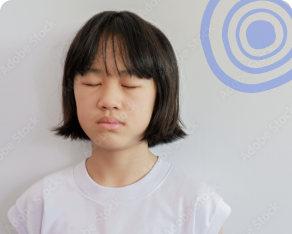
DIY Guide for Kids
How to Learn and Practice CBT Skills for Treatment of Anxiety
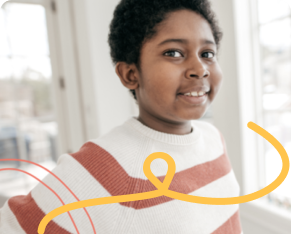
Workbook
CBT Workbook for Anxiety
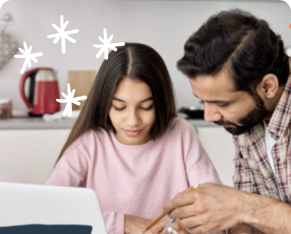
DIY Guide for Kids
Deep Breathing Exercises
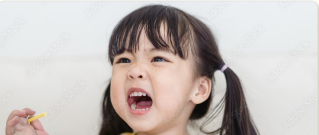
DIY Guide for Kids
How to Practice Mindfulness

DIY Guide for Kids
Progressive Muscle Relaxation for Children & Adolescents
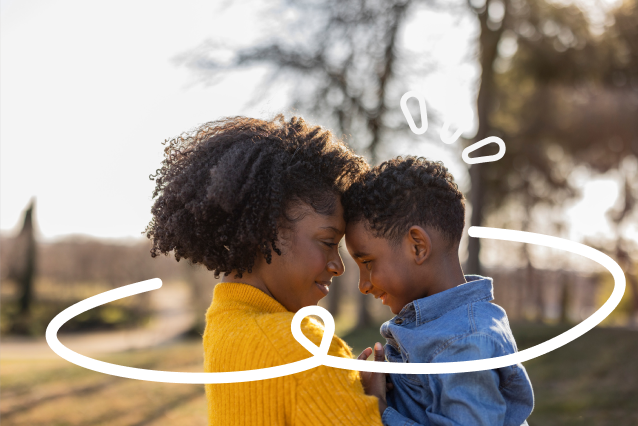
DIY Guide for Kids
Guided Imagery for Children & Teens

Common questions you may have as a Parent
How can I talk to my child about their feelings without making them feel judged?
Approach conversations with empathy and patience. Ask open-ended questions to encourage sharing. Listen actively, showing that you understand and care. Avoid being critical or dismissive. Let your child know it’s okay to feel the way they do and that you are there to support them.
What should I do If my child refuses to take medication?
Discuss their concerns openly and involve them in treatment decisions, understanding their fears to help address them. Emphasize the benefits of medication in managing anxiety and improving quality of life. Use the DESC technique to communicate effectively and foster cooperation—click here for a guide on implementing this method. If necessary, consult their healthcare provider to explore alternative treatment options.
How Can I Make Sure That My Child's School Is Supportive of Their Needs?
Maintain regular communication with your child, their teachers, and school counselors to understand how ADHD symptoms affect their school functioning. If ADHD is impacting your child, discuss with their provider and counselor whether school accommodations would be helpful. If recommended, work closely with school staff to develop an individualized education plan (IEP) or 504 plan. Ensure the school provides the necessary accommodations. Being proactive helps create a supportive school environment.
My Child Is Unable to Go to School Due to Anxiety. Should I Homeschool Them?
Consult with a healthcare provider to determine if homeschooling is appropriate. In most cases, homeschooling can make anxiety worse because avoiding anxiety triggers can increase anxiety over time. However, in some situations, homeschooling can be a temporary solution. If your child's provider recommends this and you choose this route, work towards gradually reintroducing your child to a school environment. Collaborate with your child's therapist and school staff to create a transition plan for when your child is ready to return.
Have more questions? Check our FAQ section
.png)
After-hours Crisis Care
Our emergency same-day appointments minimize after-hours crises. But, if you’re in crisis outside our working hours (Mon to Fri from 8 AM to 5 PM), call 911 or visit the nearest ER for immediate help and safety assessment.
Resources
In Case of an Emergency or Mental Health Crisis
A mental health emergency occurs when your child's behavior poses a danger to A mental health emergency happens when your child's behavior poses a danger to themselves or others, or when they cannot care for themselves and function normally. Signs of a mental health emergency include thoughts of suicide, severe emotional distress, or a mental health or substance use crisis. In these situations, it's crucial to know who to contact for immediate help.
Here are some essential emergency contacts:
-
Call 911 or go to your nearest emergency room.
-
Call 988: This hotline connects you to trained crisis counselors who can provide support for mental health-related distress, including thoughts of suicide, mental health or substance use crises, and any other kind of emotional distress.
-
Crisis Text Line: Text MHA to 741741 to receive free, text-based 24/7 support from a trained Crisis Counselor.
By having these resources readily available, you can act quickly and effectively during a mental health crisis, ensuring the safety and well-being of your child.
Other Resources
- "What to Do When You Worry Too Much" by Dawn Huebner: This interactive self-help book is designed for children ages 6-12 and helps them understand and manage their anxiety through practical exercises and activities.
- "The Anxiety and Phobia Workbook" by Edmund J. Bourne: A comprehensive resource for older children and adults, offering practical exercises to manage anxiety and phobias effectively.
- Anxiety and Depression Association of America (ADAA): adaa.org
- Child Mind Institute: childmind.org
- Anxiety and Depression Support Group: Local chapters available through ADAA.
- The National Alliance on Mental Illness (NAMI) Provides family support groups and resources. nami.org
- "Calm Kids": Techniques and stories to help children manage anxiety.
- "Your Anxiety Toolkit": Practical tools for managing anxiety, suitable for parents and older children.
For Kids:
-
"Mindfulness for Kids" by Cosmic Kids Yoga: Engaging videos that teach mindfulness and relaxation techniques.
-
"GoZen!": Animated videos that teach kids how to manage stress and anxiety.
For Parents:
-
"Understanding Anxiety in Children" by Child Mind Institute: Expert explanations and advice on recognizing and managing anxiety in children.
-
"How to Help Your Child with Anxiety" by The National Alliance on Mental Illness (NAMI): Practical tips and strategies for parents to support their anxious children.
-
"Anxiety in Children: What it Looks Like and How to Help" by KidsHealth: A comprehensive guide to understanding anxiety disorders in children and how to support them effectively.
- Headspace for Kids: Guided meditations and mindfulness exercises designed for children.
- Stop, Breathe & Think Kids: An app with mindfulness activities tailored for kids' emotions.
- Calm: Offers guided meditation and relaxation exercises suitable for kids and adults.








